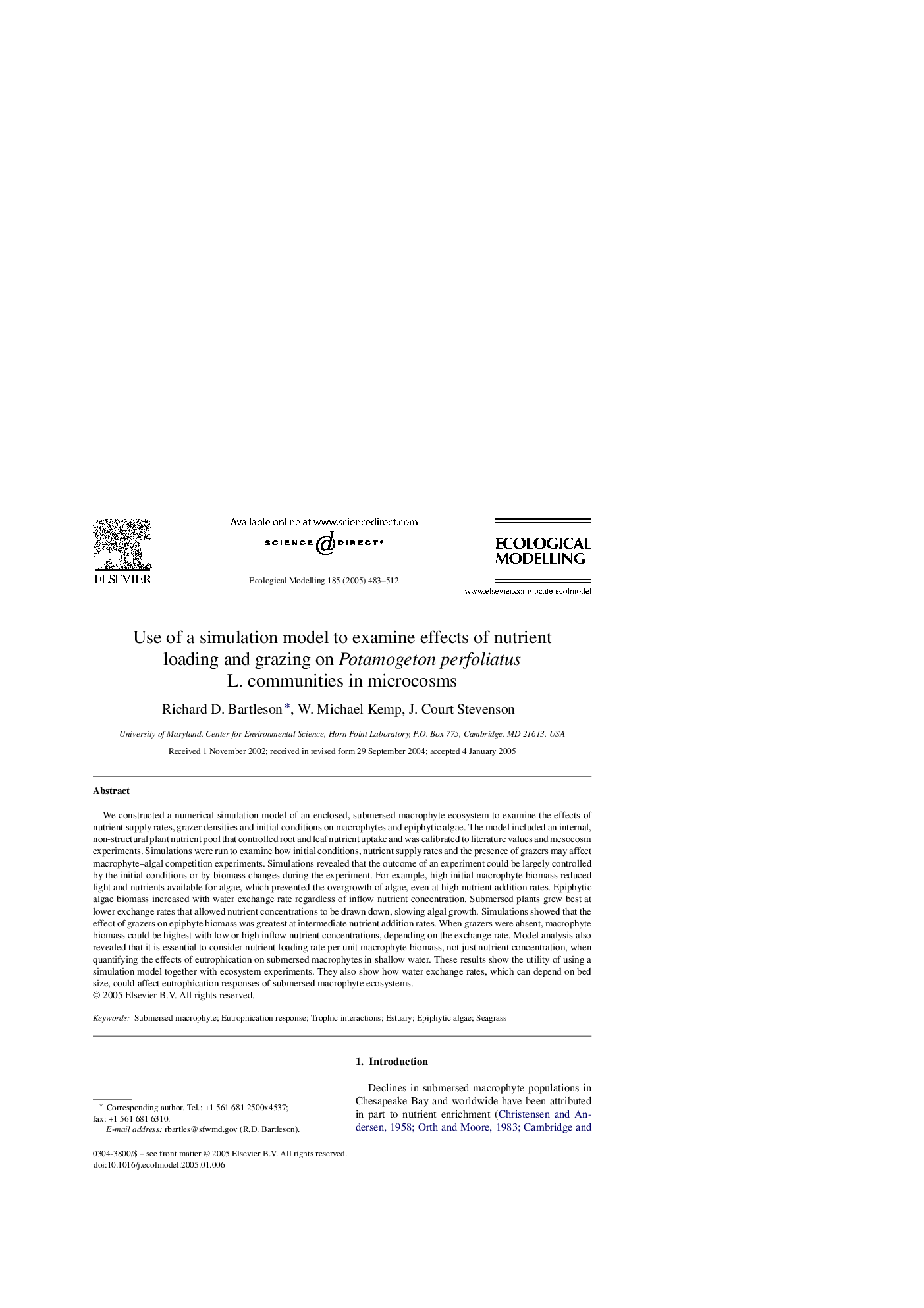| Article ID | Journal | Published Year | Pages | File Type |
|---|---|---|---|---|
| 9443401 | Ecological Modelling | 2005 | 30 Pages |
Abstract
We constructed a numerical simulation model of an enclosed, submersed macrophyte ecosystem to examine the effects of nutrient supply rates, grazer densities and initial conditions on macrophytes and epiphytic algae. The model included an internal, non-structural plant nutrient pool that controlled root and leaf nutrient uptake and was calibrated to literature values and mesocosm experiments. Simulations were run to examine how initial conditions, nutrient supply rates and the presence of grazers may affect macrophyte-algal competition experiments. Simulations revealed that the outcome of an experiment could be largely controlled by the initial conditions or by biomass changes during the experiment. For example, high initial macrophyte biomass reduced light and nutrients available for algae, which prevented the overgrowth of algae, even at high nutrient addition rates. Epiphytic algae biomass increased with water exchange rate regardless of inflow nutrient concentration. Submersed plants grew best at lower exchange rates that allowed nutrient concentrations to be drawn down, slowing algal growth. Simulations showed that the effect of grazers on epiphyte biomass was greatest at intermediate nutrient addition rates. When grazers were absent, macrophyte biomass could be highest with low or high inflow nutrient concentrations, depending on the exchange rate. Model analysis also revealed that it is essential to consider nutrient loading rate per unit macrophyte biomass, not just nutrient concentration, when quantifying the effects of eutrophication on submersed macrophytes in shallow water. These results show the utility of using a simulation model together with ecosystem experiments. They also show how water exchange rates, which can depend on bed size, could affect eutrophication responses of submersed macrophyte ecosystems.
Related Topics
Life Sciences
Agricultural and Biological Sciences
Ecology, Evolution, Behavior and Systematics
Authors
Richard D. Bartleson, W. Michael Kemp, J. Court Stevenson,
